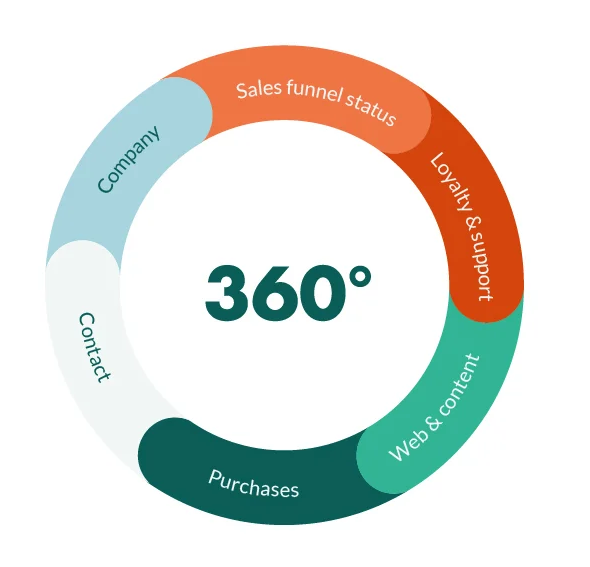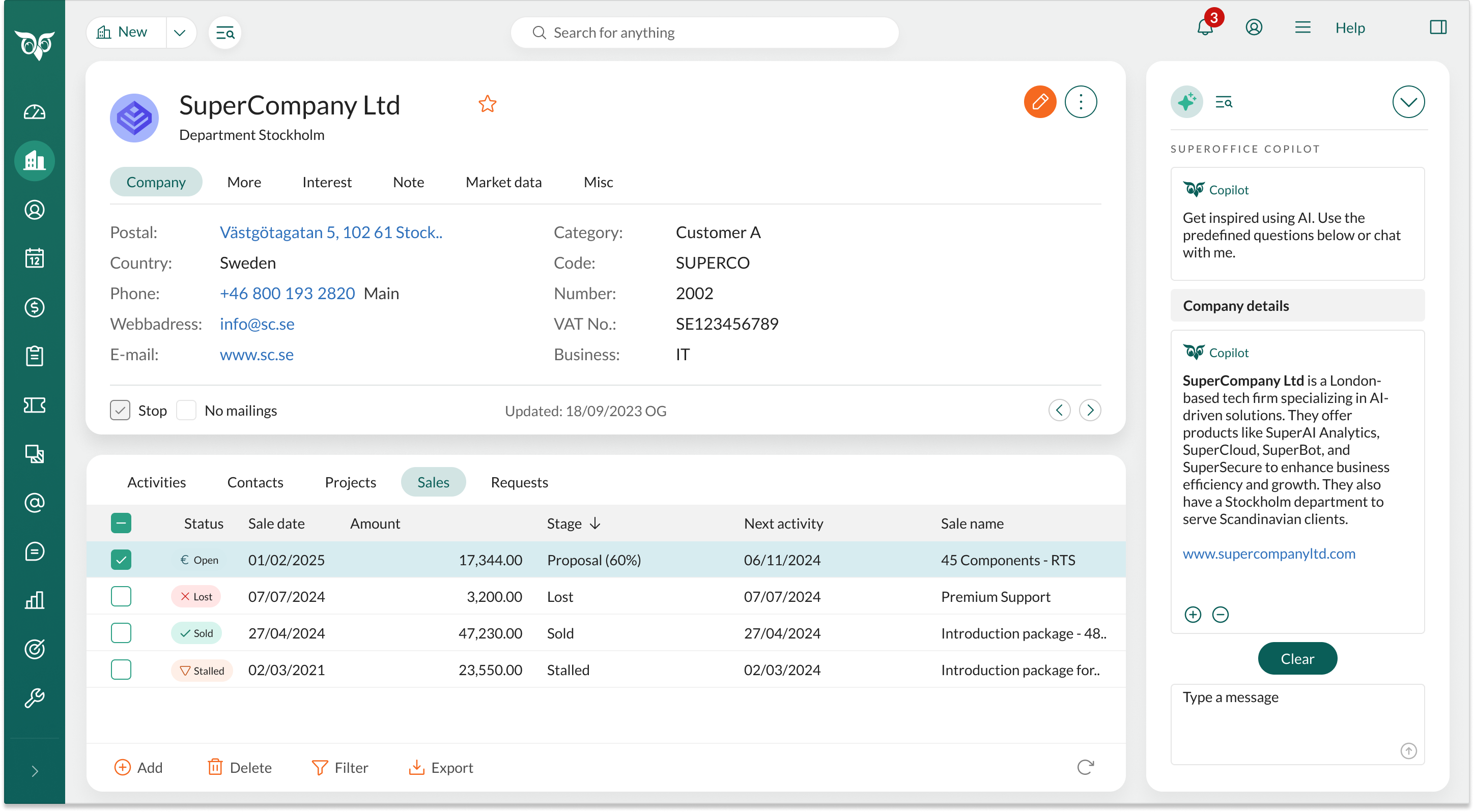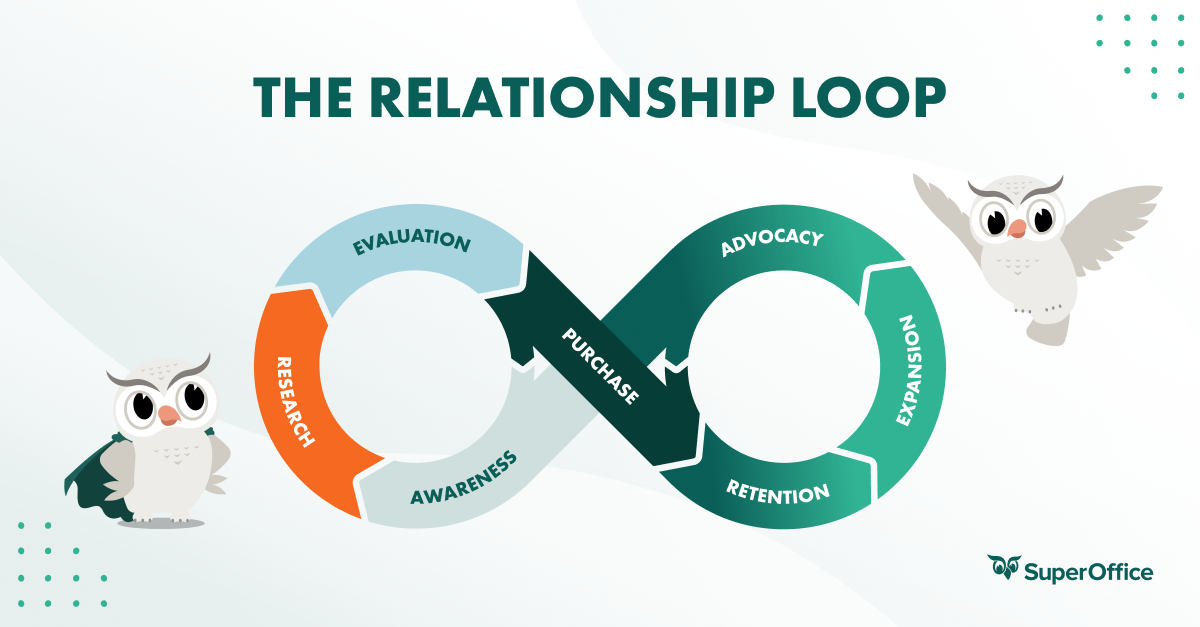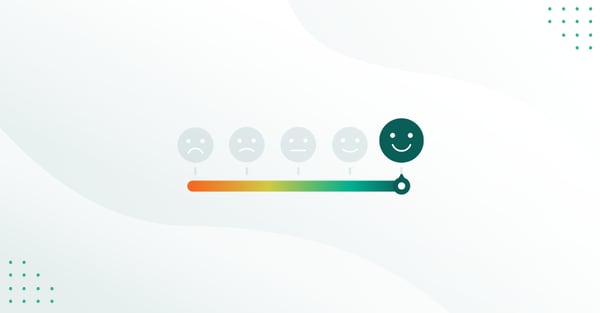Customer expectations have never been higher.
And their patience? It’s never been shorter.
Today, it takes more than great products or slick marketing to win. Buyers want personal, seamless, and lightning-fast experiences - across every interaction. And if they don’t get them? They leave.
In fact, CX is now the #1 strategic focus for growing businesses worldwide.
- 58% of customers will pay more for a better experience
- Companies that lead in CX grow revenue up to 80% faster
- One bad interaction? 1 in 3 customers will walk away - for good
The gap between good and great is growing - fast.
In this article, we unpack a modern, scalable approach to CX that drives real business impact.
You’ll learn how to:
- Design experiences that turn first-time buyers into loyal advocates
- Align sales, service, and marketing around the full customer journey
- Use CRM and data to personalize at scale - without adding chaos
This isn’t about warm feelings. It’s about sustainable growth, stronger relationships, and higher lifetime value.
Let’s dive in.
What Customers Expect Today
What do modern buyers really expect from a brand?
It’s not just about fast replies - it’s about feeling understood.
Today, great CX means being personal, consistent, and responsive across every channel. It’s not enough to react quickly - customers want every interaction to feel effortless and relevant.
Customers expect you to:
- Know who they are - and remember their history
- Respond quickly - no matter the channel
- Tailor every interaction - based on real needs
- Solve problems seamlessly - without making them repeat themselves
And they reward companies that get it right.
But here’s the shift: modern CX isn’t just built on empathy - it’s powered by systems.
The best companies build operations around the customer journey.
That means:
- A single view of every customer across teams
- Smart automation that removes friction
- Built-in feedback loops to learn and improve
- Data-driven decisions that anticipate needs
In other words, CX is no longer a soft skill - it’s an operational advantage.
Why CX Is So Hard to Get Right
Everyone says CX is a priority.
But for most companies, it still breaks down where it matters most - in the daily details.
Here’s why:
Siloed Systems = Siloed Experiences
Customer data is scattered across tools and teams. Sales sees one version of the truth, marketing another, and support is left in the dark. Without a unified view, it’s nearly impossible to deliver connected, consistent experiences.

Too Much Tech - Too Little Adoption
Many companies invest in CX platforms, but never get teams to use them. The result? Poor data quality, missed signals, and clunky workarounds that frustrate both reps and customers.
Personalization Without Context
Brands try to personalize - but without real-time data and behavioural insight, the result is often generic or mistimed.
“Hi [FirstName]” doesn’t cut it when the offer isn’t relevant, or the outreach feels disconnected. Great CX isn’t just a mindset. It’s an operational discipline - and that’s where most companies fall short.
Most teams have the right intentions - but not the right systems. Without connected data, streamlined processes, and the ability to act in real time, even the most customer-focused companies struggle to deliver consistent experiences.
What Great CX Looks Like Today
Customer experience used to mean smiling reps and speedy responses. Today, it’s something bigger: fast, personal, and connected - across every channel, every time.
The best companies don’t just react. They anticipate.
Here’s what that looks like - in action:
Unified Customer View
No matter who picks up the phone (or the chat), they know who the customer is, what they’ve bought, and what’s happened before.
That means no repeating information, no “let me check with another department,” and no awkward handoffs.
When a customer reaches out, it feels like you’ve been expecting them - because you’ve got the full context in front of you.
It also helps teams act faster. No digging through spreadsheets or bouncing between tools. Just a clear, connected view of every customer, from marketing and sales to service and success.

Smart Automation (That Still Feels Human)
The right tech doesn’t replace people - it empowers them.
Reps spend less time on repetitive admin (like assigning tickets, updating statuses, or sending reminders) and more time on work that actually moves the needle.
But the real magic is in personalization: automation that adapts based on what each customer needs, not just what the workflow says.
A service ticket can escalate instantly if it’s from a VIP. A sales follow-up can trigger automatically after a product page visit. The customer doesn’t see the process - they just feel seen.
When these four enablers work together, great CX becomes repeatable — not accidental.
You don’t need more tools. You need a single system that connects your data, teams, and touchpoints from day one.
Personalization at Scale
Customers expect brands to know who they are and what matters to them.
That means more than just using their name. It means recognizing their preferences, anticipating their needs, and delivering content, offers, or service that feels relevant - and timely.
Great CX brands use data to send perfectly timed reminders. To recommend the right product at the right moment. To check in before there’s ever a problem.
The result? Every interaction feels one-on-one - even when it’s delivered at scale.
It’s just that very few brands use personalization the right way…
Omnichannel That Feels Effortless
Customers don’t think in channels.
They just want help, fast - whether they email, call, chat, or DM you.
The best experiences make switching between channels seamless. Start a conversation on chat, get a follow-up via email, and finalize by phone - all without losing context.
But to pull that off, your systems need to talk to each other. When every touchpoint is connected through CRM, it doesn’t matter where the conversation starts. It always feels like one journey.
And that builds trust. Because customers don’t feel like they’re repeating themselves - they feel like you’re listening.
From unified timelines to automated workflows and real-time personalization, SuperOffice helps B2B teams deliver the kind of experience modern customers expect — and competitors struggle to match.
See how it works in action. Book your personalized demo now.
How CRM Helps You Deliver - At Every Stage
A modern CRM platform isn’t just a contact database - it’s your customer experience command center. It connects data, teams, and touchpoints, so you can deliver standout experiences at every stage of the journey. Here’s how:
Awareness & Acquisition: Capture Every Lead
When someone shows interest, CRM makes sure nothing slips through the cracks.
Instantly capture leads from forms or chat, qualify them automatically, and alert the right rep to follow up - fast.
For example, a visitor downloads a guide → CRM scores the lead, assigns it, and triggers a personal intro within minutes.
Engagement & Conversion: Focus Where It Counts
See what each lead has clicked, read, or asked about - and reach out with context. Guided workflows help your team follow up consistently and close deals faster.
It’s true: Reps using CRM hit quota 41% more often.
Onboarding & Support: Create a Seamless Handoff
CRM ensures support sees the full picture - no more starting from scratch.
Trigger welcome emails, track onboarding steps, and flag at-risk accounts before problems arise.
Pro tip: Build onboarding journeys in CRM so every new customer feels supported from day one.
Growth & Retention: Stay Proactive and Personal
When a customer is onboard, the journey’s just getting started.
CRM tracks usage behind the scenes, sets renewal reminders, and spots changes in behaviour - so you can jump in before issues arise.
For example, if engagement dips, CRM can trigger a check-in or surface an upsell opportunity - right when it matters most.
From first touch to renewal, SuperOffice helps you deliver standout CX at every step See how automation, insights, and simplicity come together. Book your demo.
The ROI of CX: Why Better Experience Drives Better Results
Customer experience isn’t just a feel-good metric. It’s a measurable growth lever - one that directly impacts revenue, retention, and reputation.
Let’s break down why investing in CX pays off (fast).
Higher Spend
Customers don’t just buy products - they buy how it feels to buy from you.
According to PwC, 73% of customers say experience is a key factor in their purchasing decisions - second only to price.
Think of CX as a pricing multiplier.
The better the experience, the less price becomes a barrier.
Greater Loyalty
A happy customer comes back. A delighted customer brings others with them.
Research shows that customers who rate a company’s experience 10/10 spend 140% more and remain loyal up to 6x longer. That kind of retention compounds fast.
More Advocacy
Today’s best marketing isn’t a campaign - it’s a recommendation.
Companies with excellent CX generate more referrals, more organic reviews, and more brand affinity. That lowers acquisition costs while increasing lifetime value.
CX-focused companies see 5x higher customer advocacy rates, which fuels demand without paid spend.
Faster Growth
Companies that lead in CX don’t just make customers happier - they grow faster.
According to Temkin Group, CX leaders earn $700M more over 3 years (on average) than laggards - all on the same base revenue. That’s not incremental. That’s transformational.
See SuperOffice in Action
With SuperOffice CRM, B2B teams streamline the entire customer journey - from first touch to renewal. No silos, no guesswork. Want to see how it works? Book a demo.

5 Proven Ways to Improve Customer Experience
Customer expectations keep rising - but so do your opportunities to deliver. These 5 best practices help you build a CX strategy that scales, strengthens loyalty, and drives revenue.
1. Start With a CX Vision Everyone Can Act On
CX isn’t just a goal - it’s a mindset. But without a clear definition of “what good looks like,” teams default to reacting, not delighting.
Craft a simple, memorable CX vision that sets the tone across departments. Then embed it in onboarding, training, and performance goals.
For example: “We act fast. We follow through. We treat customers like people.”
SuperOffice Tip: Use your CRM to build these values into playbooks, so they show up in daily actions - not just posters.
2. Design the Journey, Not Just Touchpoints
One great interaction can’t save a broken experience.
Map the full customer journey - from first contact to renewal - and identify where things get slow, frustrating, or impersonal. Then redesign for flow: fewer handoffs, faster response, more relevance.
Prioritize the biggest pain points first. Friction is where loyalty dies - or loyalty is built.
Pro tip: Use your CRM’s journey insights to track real-time progress and adjust fast.

3. Empower Teams With Context and Autonomy
People create great experiences - but only when they have the tools and authority to act.
Give every rep a complete customer view: past issues, current deals, preferred channels. Then remove red tape. Let them solve problems, personalize outreach, and move fast - without five levels of approval.
For example: Some teams use “friction credits” - small gifts or fast fixes agents can offer, no manager sign-off required.
SuperOffice Tip: Link customer history, behavior, and satisfaction data in one timeline - so reps can see the full picture and act with confidence.
4. Automate Where It Helps - Humanize Where It Matters
Customers don’t hate automation - they hate irrelevant, robotic experiences.
Use automation to handle the repetitive stuff (reminders, routing, follow-ups). But build in human moments where it counts - like onboarding, escalations, or moments of surprise and delight.
Tip: SuperOffice workflows trigger the right actions at the right time - without sacrificing the personal touch.
5. Close the Loop on Feedback (In Real Time)
Don’t just collect feedback - show customers it matters.
Use CSAT or NPS to track satisfaction, then link responses to your CRM to drive follow-up, coaching, or escalation. Let frontline teams see their impact. Let leadership see what’s working. And let customers know they’re heard.
Real-time feedback → real-time improvements → real-time loyalty.
Ready to put these strategies into action?
With SuperOffice CRM, it’s easy to turn best practices into everyday workflows — so your team delivers better experiences without the busywork. Book a personalized demo and see how.
Customer Experience Is the New Battleground
Customer expectations are sky-high - and loyalty is hard-won.
Buyers don’t just compare you to your competitors. They compare you to the best experience they’ve ever had.
That means fast answers. Seamless handoffs. Personalized touchpoints that feel effortless.
The companies that deliver on this - consistently, across the entire journey - win more customers, earn more loyalty, and grow faster.
It’s not about flashy tech. It’s about building trust at scale.
And that starts with a better system behind the scenes.
SuperOffice CRM brings your teams, data, and customer journeys together - so you can focus on what matters: delivering standout experiences that drive real growth.
Ready to turn CX into your biggest growth lever?
Talk to a CRM expert or book a personalized demo and see how SuperOffice helps B2B teams scale loyalty, automate the right moments, and grow revenue - without the chaos.




